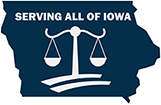- Osceola Car Accident Injury Attorneys
- Phone: 641-792-3595
- Directions
Accidents and injuries can abruptly derail lives. In such difficult times, car accident injury lawyers become indispensable allies. They fight for individuals harmed by others' negligence, ensuring fair compensation. This article underscores the critical role these lawyers play in helping people navigate their claims and rebuild their lives.
A car accident can result in various injuries, some of which can significantly impact one's life. One such injury is a torn tendon, which can be debilitating and result in extensive medical bills, lost wages, and other damages. In Iowa, understanding how these injuries affect a claim and knowing what steps to take post-accident can make a substantial difference in the outcome of a personal injury case.
Types of Torn Tendons from Car Accidents
Tendons are soft, band-like tissues that connect muscles to bones. A torn tendon can range from a mild stretch to a complete tear, impairing movement and function. Common joints affected by torn tendons in car accidents include:
- Shoulder: Injuries can involve the bicep or rotator cuff, often resulting from extending an arm to brace for impact. Rotator cuff tears are particularly debilitating and may accompany other injuries, such as dislocated shoulders or broken collarbones.
- Ankle: Tendon tears in the ankle can significantly affect mobility and typically result from a sudden impact to the legs during a crash.
- Knee: The patellar tendon, which connects the kneecap to the shinbone, can tear due to a strong force. Such injuries are often disabling and require substantial medical intervention.
Signs and Symptoms of a Torn Tendon
Recognizing a torn tendon involves looking for the following signs and symptoms:
- Bruising
- Popping or snapping sound at the time of injury
- Numbness or weakness in the affected area
- Difficulty with movement
- Pain that worsens with movement
Treatment Options
Treatment for a torn tendon varies based on the severity of the injury. A partial tear might heal with nonsurgical treatments such as ice packs, NSAIDs (nonsteroidal anti-inflammatory drugs), and rest. In more severe cases, steroid injections may be necessary.
For complete tears or when nonsurgical methods fail, surgery might be required. Post-surgery, patients often need a cast, splint, or sling and undergo rehabilitation to restore movement. Recovery time is typically longer if surgery is involved.
Legal Options for Torn Tendon Injuries in Car Accidents
In Iowa, car accident claims for injuries like torn tendons primarily address medical costs and lost wages during recovery. Claims can also cover future medical expenses, such as rehabilitation, and compensation for permanent disability and pain and suffering, depending on the injury's severity and impact on the victim's life.
Collecting Evidence at the Accident Scene
Preserving and collecting evidence immediately after an accident is crucial. Essential evidence includes:
1. Photographs: Take pictures of the crash scene, damaged vehicles, tire marks, damaged property, street signs, lights, and any other relevant details.
2. Driver Information: Collect names, telephone numbers, addresses, insurance details, and driver’s license and plate numbers of all involved parties.
3. Witness Information: Obtain contact information from witnesses and, if possible, get written statements or diagrams of the accident.
4. Police Report: Ask the responding officer how to obtain a copy of the accident report and note the case number or the officer’s name for easy reference.
5. Additional Evidence: Gather contact details of anyone who captured photos or videos of the accident or businesses with surveillance footage.
Determining Liability in Rear-End Collisions
Determining liability in rear-end collisions can be complex. Although it is often assumed that the rear driver is at fault, this is not always the case. Factors to consider include:
- Negligence: Identify if either party was negligent by breaking traffic laws, driving under the influence, driving aggressively, speeding, or being distracted.
- Evidence: Prove negligence using police reports, witness testimony, breathalyzer/drug tests, cell phone records, individual testimony, and physical/photo evidence.
- Comparative Fault: In Iowa, if both drivers share fault, the comparative fault laws will apply. The claimant’s damages are reduced in proportion to their percentage of fault.
Seeking Legal Assistance
Seeking legal counsel from experienced Iowa car accident attorneys such as those at Walker, Billingsley & Bair can provide invaluable support in filing insurance claims or pursuing personal injury lawsuits. With a comprehensive understanding of Iowa law, their team can help gather evidence, establish liability, and secure the compensation deserved by accident victims.
Suffering from the aftermath of a car accident shouldn't impede your pursuit of justice and fair compensation. The Iowa injury lawyers at Walker, Billingsley & Bair work hard to level the field between injured Iowans and insurance companies.
That's why we provide this FREE book; The Legal Insider's Guide to Iowa Car Accidents: 7 Secrets to Not Wreck Your Case. To learn more about what our legal team will do to help you protect your Iowa injury claim, contact Walker, Billingsley & Bair to schedule a no-cost consultation. Call 641-792-3595 to order your free accident book today.

